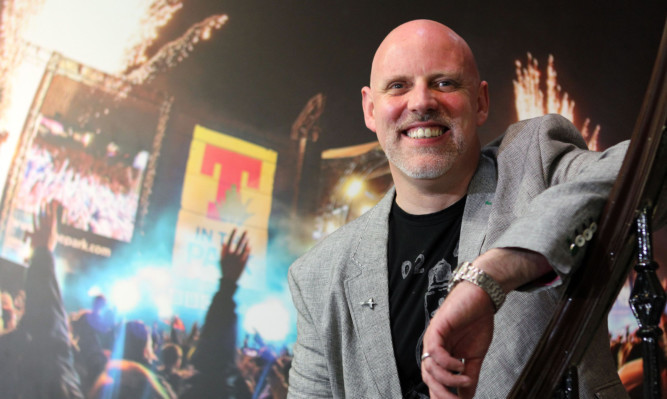On a July afternoon in 1994, a hip-hop act called Honky bounded on to a stage in the middle of a field in Strathclyde Park.
Honky had the honour of being the first group to play T in the Park although they later complained that nobody heard them because they were too busy queuing up outside.
For festival founder Geoff Ellis, organising the first T in the Park was a difficult time filled with challenges, obstacles and pitfalls around every corner.
More than two decades later, he admits putting together the 2015 event has been even more fraught.
With a planning decision fastapproaching, DF Concerts has come under fire from protesters who want to stop the festival moving to its new home in the grounds of Strathallan Castle.
They have accused the company of using illegal tactics involving a cherry picker to stop protected ospreys nesting at the estate, although police later confirmed no crime had been committed.
Most recently, the anti-T camp, led by the Strathallan T Action Group, suggested the festival cannot go ahead because a 1,500m exclusion zone needs to be set up around any osprey nest on the site.
But, in an exclusive interview with The Courier, Mr Ellis branded the latest claims “ludicrous”.
The festival director said such a massive buffer zone was apparently used to protect ospreys just once before, on a cliff at Idaho in the 1970s.
“Their nests were not elevated,” he said.“While at Strathallan the nests are at the tops of some of the tallest trees, so it’s a completely different situation.”
He said it was the latest piece ofmisinformation spread by festivalopponents.
“These people don’t want the event to happen,” he said.“They are getting desperate and they are ‘weaponising’ the ospreys.”
He continued: “Tomorrow, we will be accused of something else, because these people and they are in the minority in the local area simply don’t want T in the Park to be happening anywhere near where they are, and that is what’s driving them.”
RSPB Scotland also confirmed to The Courier that the 1,500m buffer was untrue, although a 750m zone may still be needed.
Mr Ellis said: “Even at 750m, it doesn’t mean there has to be a buffer zone of that distance. That’s just the distance whereconsultation (with RSPB Scotland and Scottish Natural Heritage) starts to take place.”
He said that objectors had been“irresponsible” to release video and images of the ospreys’ nest.
“They are not an organisation that’s out to protect wildlife, they simply don’t want T in the Park to happen.”
Mr Ellis said the osprey pair were still choosing from one of two nests on the site.
“Both of these nests are effectively active until they discount one of them, and we will work with relevant organisations to make sure the birds and the festival can coexist.”
He said the birds at Strathallan were “hardy” and well used to other activities at the estate, including small aircraft flights and pheasant shooting.
Mr Ellis said he was so assured that the show will be granted planning consent this summer he isn’t even contemplating a Plan B.
“I’m not even thinking about what would happen if we don’t get permission,” he said. “I’m confident it will be granted, because that would be the common sense thing to do.”
